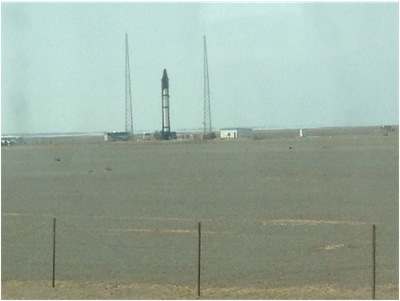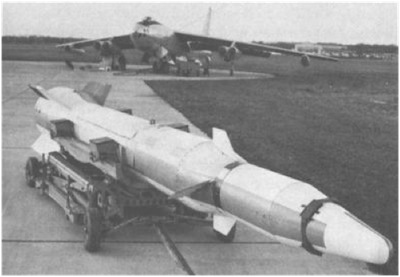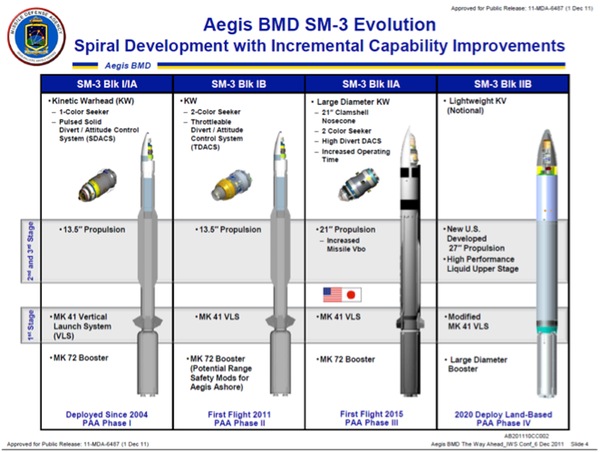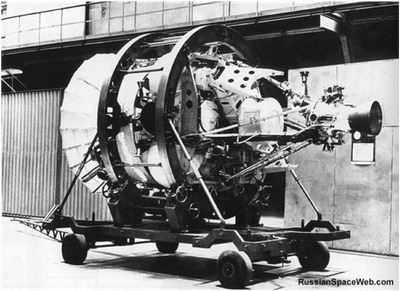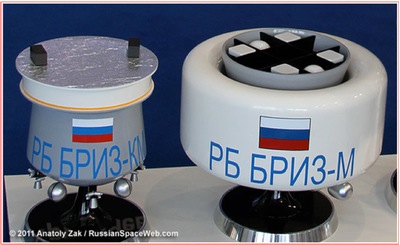Through a glass, darkly: Chinese, American, and Russian anti-satellite testing in space<< page 1: assessment of the May 2013 launch From Xichang ASAT weapons testing in space by other countriesIn evaluating the potential significance of China’s ASAT weapons testing and development, it is important to place it in context by comparing its ASAT weapons development to that of ASAT weapons development programs by other states. ASAT weapons launched into space generally fall into one of two categories: direct-ascent or co-orbital systems. Direct ascent systems use rockets to put an interceptor on a suborbital trajectory that intersects with the target in orbit without the interceptor entering orbit itself. Both of the Chinese ASAT weapon systems described above fall into this category. By contrast, co-orbital systems use an SLV to place the interceptor into orbit, after which it maneuvers to either collide with or pass near the target. China is not known to be testing a co-orbital ASAT system, although some have claimed that recent on-orbit maneuvers and rendezvous by Chinese satellites is a demonstration of just such a system. However, as I discussed in my article about similar 2010 rendezvous activities of the Chinese SJ-12 satellite (see “Dancing in the dark: The orbital rendezvous of SJ-12 and SJ-06F”, The Space Review, August 30, 2010), there is no publicly available evidence to support the conclusion that these were tests of a militarily useful ASAT weapon. Instead, all evidence points towards the testing of an on-orbit inspection capability.
It is also important to distinguish between the testing of systems that could have residual ASAT capabilities and testing of weapons systems that are designed to provide specific, operationally useful military capabilities. The former is usually characterized by one-off testing and experiments, while the latter is usually characterized by more extensive testing programs that consist of multiple tests of increasing complexity or difficulty. This following discussion of US and Russian ASAT development and testing will focus on projects that involve launching objects into space as part of the research, development, testing, and evaluation (RDT&E) of operationally useful military capabilities or their precursors. It will also include significant real-world demonstrations of residual ASAT capabilities. It does not include ASAT weapons programs that did not progress to real-world testing, nor programs that involved non-kinetic weapons tests, such as laser dazzlers or radiofrequency jamming. United States ASAT testing in spaceThe United States was the first country to develop an ASAT weapons system. Although there were several early ideas for various ASAT capabilities and weapon systems, the first to be actually tested in space began in 1958 as part of a US Air Force technology development program for new strategic weapons known as Weapon System 199 (WS-199). It included the development of a nuclear-tipped, air-launched ballistic missile (ALBM) named Bold Orion (WS-199B). The first version of the missile included a single solid rocket stage and was designed to be launched from a B-47 bomber. Eight tests of this version were conducted between May 26, 1958, and June 19, 1959, during which the missiles reached apogees near 100 kilometers (62 miles) during their flights.
A second, two-stage version with a horizontal range of 1,770 kilometers (1,100 miles) began a series of four tests on December 8, 1958. The last of these tests, conducted on October 13, 1959, was conducted to see if the missile could potentially be used in an ASAT role. The test targeted the American satellite Explorer VI at an altitude of 251 kilometers (156 miles). The interceptor passed within 6.4 kilometers (4 miles) of the target satellite, which qualified as a success due to the blast radius of its nuclear warhead. Although neither Bold Orion nor High Virgo were developed into operational ASAT systems, they did pave the way for future operational systems and provided useful testing data for later US ASAT development efforts. Table 2. Summary of tests of Bold Orion in ASAT role (source)
A separate project, designated WS-199C and code-named High Virgo, also examined the feasibility of a nuclear-tipped ALBM for the B-58 bomber. High Virgo was very similar to Bold Orion, using essentially the same one-stage solid rocket. Four High Virgo tests were conducted between September 5, 1958, and September 22, 1959, with the final test examining its potential as an ASAT weapon. However, no telemetry or camera data was recovered from the test and so its outcome is uncertain. Table 3. Summary of tests of High Virgo in ASAT role (source)
During the early 1960s, the US Navy was also researching possible ASAT capabilities. Early efforts focused on matching a Navy Sparrow anti-aircraft missile with a Polaris submarine-launched ballistic missile (SLBM) but these efforts did not proceed beyond ground experiments. However, in 1962 the Navy began work on Project HiHo, which involved a Caleb rocket fired from a Phantom 4D fighter-bomber aircraft. Although the primary focus was on developing an air-launched SLV, a secondary objective was to develop ASAT capabilities. Two test launches in space were conducted in 1962, with the second launch reaching an apogee of 1,600 kilometers (1,000 miles). In the end, the Navy decided not to pursue an operational version. Table 4. Summary of tests of Project HiHo in ASAT role (source)
The first operational US ASAT weapons system was Program 505, which grew out of the Nike Zeus program. The objective of Nike Zeus was to develop the capability to intercept nuclear warheads using a nuclear-tipped, ground-launched ballistic missile. The first version, Zeus A, had the capability to intercept warheads in the upper atmosphere. The second version, Zeus B, was much larger and more powerful and designed to intercept warheads at altitudes of hundreds of kilometers. Both versions were equipped with a 400-kiloton W50 nuclear warhead. In 1962, Secretary of Defense Robert McNamara created Project Mudflap out of the Nike Zeus program in order to counter the Soviet Fractional Orbital Bombardment System (FOBS). The goal was to create an ASAT weapon capable of intercepting Soviet FOBS satellites carrying nuclear weapons to drop on the United States. Multiple tests were conducted in 1962, and in 1963 the program moved to Kwajalein Atoll in the Pacific. In May 1963, a modified Zeus B missile successfully intercepted an Agena D rocket stage in orbit, demonstrating an effective ceiling of about 370 kilometers (200 miles). (In this article, the term “ceiling” is used to describe the functional upper altitude limit of an ASAT weapon system while the term “apogee” is used to describe the highest point in the trajectory of a particular flight.) From this point onward, Program 505 was considered operational and remained so until 1967, when the program was terminated. Table 5. Summary of testing of Program 505 (source)
Program 505 was replaced by Program 437, the second operational American ASAT weapons development program. Program 437 was similar in nature to Program 505 but replaced the Nike Zeus missile with a Thor missile, giving it longer range. McNamara initiated Program 437 in 1962 following a series of high-altitude nuclear tests, including the Starfish Prime test that ended up unintentionally crippling one third of the operational satellites in orbit at the time. Program 437 conducted a total of ten test launches from Johnston Atoll in the Pacific and was declared operational in 1964. Program 437 could target satellites orbiting as high as 1,300 kilometers (700 miles) in altitude and used a 1.4-megaton W49 nuclear warhead with a detonation range of eight kilometers (five miles). Program 437 remained operational on Johnston Atoll until the early 1970s and was formally terminated in 1975. Table 6. Summary of Program 437 tests (source).
In the late 1970s, the United States began development of its third operational ASAT weapon system, initially called the Prototype Miniature Air-Launched Segment (PMALS) and later designated the ASM-135. Like Bold Orion and High Virgo, the ASM-135 was designed as a missile to be fired from an aircraft, specifically an F-15 fighter. The ASM-135 used a modified AGM-69 Short Range Attack Missile (SRAM) two-stage nuclear air-to-surface missile as the launch vehicle with the Miniature Vehicle (MV) as the payload. The MV used an infrared sensor to home in on the target satellite. The ASM-135 was tested five times between 1984 and 1986, with the successful intercept and destruction of the US P78-1 Solwind satellite in 1985. Table 6 summarizes these tests. Table 7. Summary of tests for the ASM-135 ASAT weapon system (Source).
US Air Force plans called for the operational deployment of 112 ASM-135 missiles and 48 modified F-15 fighters with units in Washington and Virginia. However, the program was canceled in 1988 due to a combination of Congressional restrictions on its testing, budget restrictions, and concerns over potentially igniting a space arms race with the Soviets (see “Blunt arrows: the limited utility of ASATs”, The Space Review, June 6, 2005). Currently, the US military does not have any known dedicated, operational ASAT weapons systems aside from the Counter Communications System (CCS). The CCS is a “temporary and reversible” ASAT weapons system that interferes with an adversary’s ability to utilize a satellite, likely through jamming or other radio frequency interference techniques, without permanently damaging the satellite. However, many consider the US Aegis ballistic missile defense system to have an inherent ASAT capability. This is largely due to the successful use of the Aegis system to destroy the failed USA 193 satellite on February 21, 2008. The stated reason for the operation, known internally in the US government as Burnt Frost, was to prevent the satellite’s stock of toxic hydrazine fuel from presenting a danger in the event it survived atmospheric re-entry. Although one study supporting the danger of such a tank was eventually released as the result of a Freedom of Information Act request, its methodology and thoroughness left much to be desired.
Burnt Frost involved launching a Standard Missile 3 (SM-3) from the guided missile cruiser USS Lake Erie with a Lightweight Exo-Atmospheric Projectile (LEAP) interceptor onboard that collided with and destroyed USA 193 at an altitude of 247 kilometers (153 miles.) Before and after the interception, the US government made a significant public case for its responsible behavior in conducting the interception. It argued that it had designed the intercept in such a way as to minimize the amount of long-lived orbital debris it created, and made a direct contrast to the 2007 Chinese ASAT test that destroyed the FY-1C weather satellite. Steps taken by the United States to limit debris included disabling the third stage of the SM-3 to limit the intercept velocity, and hitting the target after the interceptor passed through perigee and was on a downward trajectory. After the interception, a US government press release said “nearly all of the debris will burn up on reentry within 24-48 hours and the remaining debris should re-enter within 40 days.” The reality of the debris created by Burnt Frost was quite different. The US military’s Space Surveillance Network (SSN) tracked and cataloged 174 pieces of orbital debris from the destruction of USA 193. By March 1, one week after the intercept, only two pieces of debris from the event had re-entered. By the end of March, more than half the pieces had re-entered, but it would not be until October 28, 2009, more than eighteen months later, that the final piece of debris would re-enter the atmosphere. The main reason for this was that a significant proportion of the debris was thrown into much higher orbits than the altitude of USA 193 at the time of intercept. The delta-v from the intercept pushed several pieces into orbits with apogees above 400 kilometers (248 miles), and at least two pieces into orbits with apogees above 700 kilometers (434 miles). This contrasts sharply with the public comments made by the United States on its efforts to minimize the debris from the intercept, as the resulting debris field was the same order of magnitude in size as that created by the destruction of Solwind in 1985 by the ASM-135 ASAT weapon system. Table 8. Summary of the ASAT tests conducted using the Aegis SM-3 BMD system (source).
At the time the United States argued (and has since continued to argue) that this was not an ASAT test and the SM-3 interceptor is not an ASAT weapons system. It stated that the software for the missile used in the test (and two other backup missiles) was modified to allow the missile to track and intercept a satellite and that after the intercept the software was returned to normal. However, this claim is not verifiable through external means. Thus, because the Aegis system has clearly demonstrated the capability to intercept and destroy a satellite and there is no way to verify whether a particular Aegis ship has SM-3s with modified missiles on it or not, potential adversaries likely assume that any Aegis BMD vessel could be a potential mobile ASAT threat. The caveat to this conclusion is that the version of the SM-3 missile currently deployed has a limited engagement range. Burnt Frost utilized the Block IA version of the SM-3 with the third stage disabled. The US government has not explicitly stated what the ceiling of the SM-3 Block 1A is, but outside analysts have estimated that an SM-3 utilizing all three rocket stages could have a ceiling of approximately 600 kilometers (373 miles.) There are only limited numbers of operational satellites orbiting below 700 kilometers (434 miles), which means the current version of the SM-3 has limited value as an ASAT weapon and can only reach the lower portions of LEO. However, the Missile Defense Agency is currently developing the Block IIA version in collaboration with Japan that will have significantly greater delta-v and thus a higher ceiling, possibly between 1,450 and 2,350 kilometers (900 and 1,460 miles.) Those ranges encompass virtually all the operational satellites in LEO, including nearly 100 Chinese and Russian satellites. Block IIA is expected to begin testing in 2015 and be operationally deployed in 2018 aboard ships with Aegis BMD version 5.1 and also the Aegis Ashore sites in Poland and Romania. Figure 14 shows a comparison of the various versions of the SM-3 missile.
Moreover, it is an open question as to whether the same software change that was made to the SM-3 could be applied to any of the 30 Ground Based Interceptors (GBIs) that are currently fielded in missile defense silos in Fort Greely, Alaska, and Vandenberg, California, as part of the US Ground-Based Midcourse Defense (GMD) system. The GBIs are three-stage missiles with Exoatmospheric Kill Vehicles (EKV) as the payload and have an estimated ceiling of 2,000 kilometers. This ceiling is the result of the need to intercept potential nuclear warheads launched on potential intercontinental ballistic missiles (ICBMs) from North Korea. Although the GBIs have never been tested against an orbital target, they have the reach to do if the United States so desired. And while their fixed locations in Alaska and California make them much less flexible than a mobile system, it could be that potential US adversaries also treat the GMD as a potential ASAT system. Finally, it is important to point out that not all missile defense systems have latent ASAT capabilities. Missile defense systems are generally broken down into three types based on which phase of ballistic missile flight they target. Boost phase systems target ballistic missile during their boost phase, which generally only lasts for the first few minutes of flight. Terminal phase systems target the warheads from ballistic missiles during or after their atmospheric re-entry, which is only the last few minutes of flight. Midcourse missile defense systems target ballistic missiles or their payloads during flight after boost and before re-entry. It is these midcourse missile defense systems that are very similar in capability to ASAT systems as they are designed to target objects moving through space in the same altitude regime as LEO satellites. Most boost phase missile defense systems, such as theoretical concepts for drones armed with missiles, and terminal phase systems, such as the US Army’s deployed Terminal High-Altitude Area Defense (THAAD) systems, do not have significant ASAT capabilities. Russian ASAT testing in spaceIn contrast to the United States and China, Russia has largely preferred the co-orbital type of ASAT systems with its own weapons development and testing dating back to the 1960s. The first ASAT weapons system developed by Russia was a co-orbital ASAT weapon system called the Istrebitel Sputnikov (IS) or “satellite destroyer.” The IS system consisted of a kill vehicle and a launch vehicle based on the R-36 ICBM (designated the SS-9 Scarp by US intelligence) and later on the Tsyklon-2 SLV (designated SL-11 by the US.) After being placed into orbit, the kill vehicle would maneuver to intercept the target satellite and detonate onboard explosives, generating a significant amount of shrapnel that could damage or destroy the target. Development began in the early 1960s and the system was tested in orbit multiple times between 1962 and 1982. Beginning in 1980, the tests involved an upgraded version known as IS-M that could target satellites at altitudes as high as 2,000 kilometers. The target for all of these tests was a special armored satellite with onboard sensors to record hits that could reportedly survive multiple attacks. Table 8 presents a summary of these tests, the target for the test (if there was one), and the amount of orbital debris cataloged by the US military’s tracking network of each grouping of interceptors and target. Table 9. Summary of Soviet tests of the IS co-orbital ASAT weapon system (source).
A major shortcoming of the IS system was that it could only attack targets in LEO and it needed at least two revolutions around the Earth in order to sync up with the target. This took anywhere from three to five hours and thus allowed significant time for the target to detect the attack and potentially maneuver out of the way. As a result, an upgraded version that could target maneuvering satellites, known as IS-MU, was reportedly developed in the 1980s and was declared operational from 1991 through 1993. There is no publicly available information on any operational tests of the IS-MU system in space, and the program was withdrawn from operational service in 1993.
During the mid-1980s, the Soviets began development of a second co-orbital ASAT weapons system known as Naryad. This system utilized a rocket based on the UR-100NU (NATO designation SS-19 Stiletto) that was fitted with a powerful upper stage. The upper stage was significantly more powerful and lighter in weight than previous ones and could reportedly reignite up to 75 times. This would allow the upper stage to place one or more kill vehicles into orbits as high as 40,000 kilometers (24,850 miles), allowing them to independently target and home in on multiple target satellites before detonating. The Naryad system was reportedly tested multiple times, but there are scant details on the nature and number of those tests. Publicly available information indicates two suborbital tests from Baikonour Cosmodrome in 1990 and 1991, and the first orbital launch in 1994 of a satellite that was placed into a 1,900-by-2,145-kilometer (1,180-by-1,332-mile) orbit. It is rumored that the satellite, designated Radio-ROSTO by the Russians, was actually based on the Naryad interceptor. There are no known instances of actual test intercepts of the Naryad system or of the creation of orbital debris as a result of these tests.
After the demise of the Soviet Union, the Naryad system was repurposed into a commercial SLV operating out of the Plesetsk Cosmodrome. The UR-100R became the Rockot SLV and the upper stage was rebranded as the Briz-K and later developed into the Briz-KM. The Rockot has been mostly successful, with 18 successful launches through 2013 placing more than 40 satellites into LEO. The Briz-KM was further modified with the addition of external fuel tanks to become the Briz-M. Since 2000, the Briz-M has been the main upper stage used in Russian space launches of payloads to deep space orbits, including GEO. More than 70 Briz-M upper stages are currently in orbit, and given their ASAT ancestry it is possible that the US military is suspicious of whether or not all of those are benign. In 1984, in response to the American ASM-135, the Soviets began work on their own air-launched direct ascent ASAT system known as Kontakt. The Kontakt system involved a specially modified MiG-31D fighter mated with a 10-meter-long (33-foot-long) rocket. The original rocket was designed to have the capability to intercept satellites as high as 600 kilometers (373 miles) in altitude, with later versions envisioned to have an additional stage that could engage targets up to 1,500 kilometers (932 miles). The ground infrastructure for the Kontakt program included the 20Zh6 Krona radar and the 0Zh6 LOL “laser optical locator” to help identify and precisely track the satellite targets. The goal of the program was to create a system that could attack and destroy up to 24 satellites in as little as 36 hours. Most analysts have concluded that the program did not proceed to the testing phase before its cancellation in in 1989. However, a MiG test pilot who worked on the program said in an interview that the missile was launched from a plane several times at a target in space but was detonated before it actually intercepted to prevent the United States from detecting the test. The Krona and LOL tracking systems are still an active part of the Russian Space Surveillance System (SSS). page 3: the proliferation of hit-to-kill systems and the end of space as a sanctuary >> |
|
||||||||||||||||||||||||||||||||||||||||||||||||||||||||||||||||||||||||||||||||||||||||||||||||||||||||||||||||||||||||||||||||||||||||||||||||||||||||||||||||||||||||||||||||||||||||||||||||||||||||||||||||||||||||||||||||||||||||||||||||||||||||||||||||||||||||||||||||||||||||||||||||||||||||||||||||||||||||||||||||||||||||||||||||||||||||||||||||||||||||||||||||||||||||||||||||||
